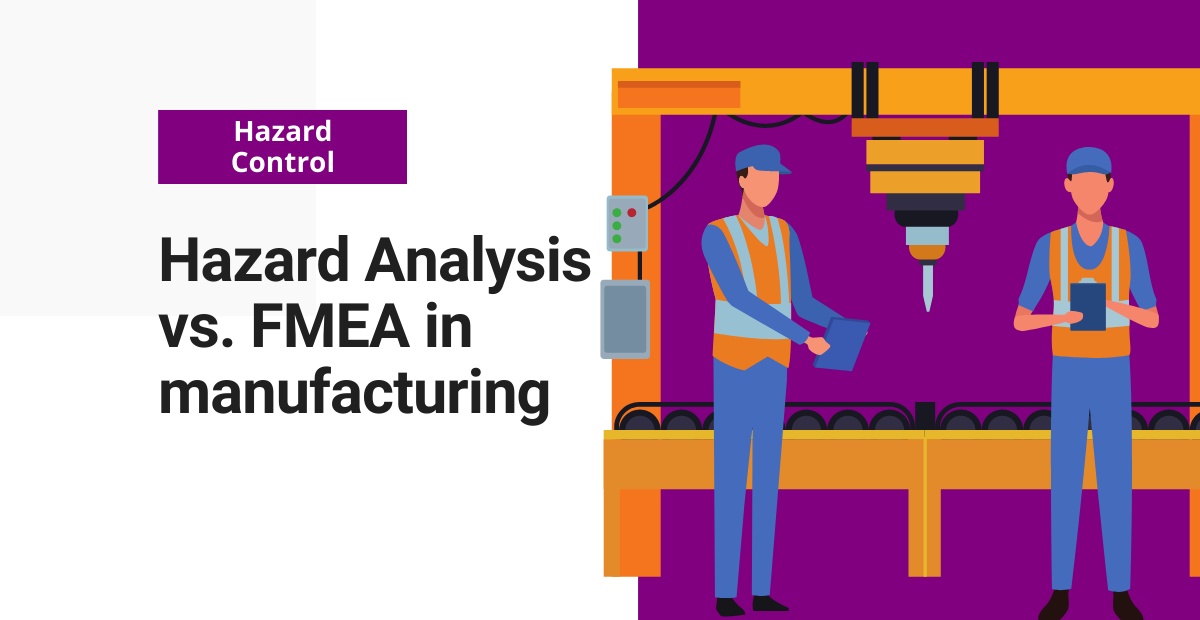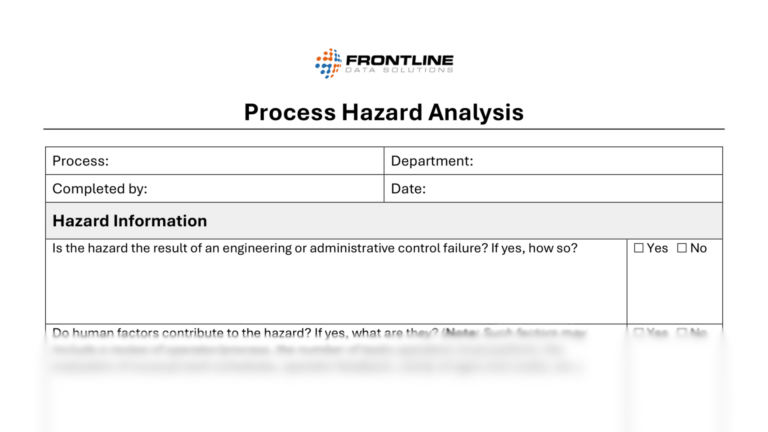Manufacturing processes involve many risks and hazards that can lead to costly mistakes and delays. Understanding hazard analysis vs FMEA is crucial for manufacturers to decide the best approach for ensuring the safety of workers and the quality of products. Manufacturers must take steps to identify and mitigate these risks.
The most common methods used are Hazard Analysis and Failure Mode and Effects Analysis (FMEA). But, understanding the differences between Hazard Analysis vs. FMEA and using them appropriately can drastically impact safety and productivity.
Free template!
Use this free form as a template for creating a site-specific PHA resources for your team.
Understanding Hazard Analysis and FMEA
Hazard Analysis is a systematic approach to risk management. Hazard analysis typically includes identifying hazards, assessing their potential impact, and implementing measures to control or eliminate them. It aims to identify and evaluate all possible hazards and risks, including those associated with equipment, processes, and work environments.
Failure Mode and Effects Analysis (FMEA) is a proactive, structured approach to identifying potential failure modes in a process and assessing the associated risks. We rely on it to develop strategies to prevent or mitigate risks. FMEA involves analyzing the process step-by-step. It identifies potential failure modes, their causes, and their effects. You also assign a severity rating to each failure mode. Then, develop corrective actions to reduce the risk of failure.
Differences between Hazard Analysis vs. FMEA
Although the goal sounds the same, there are differences in what the methods address and when they should be implemented.
In manufacturing, we use FMEA during the design and development stage of a product or process. On the other hand, hazard analysis is used during the production stage to identify and control any potential hazards. These hazards may have been missed during the design and development stage.
Advantages of using risk assessment methods
Like most EHS tools, these methods can present many benefits. Below, are some of the top advantages of integrating risk assessment methods into an operation.
Improved safety
Using FMEA can help understand and address where things can go wrong and why they would fail. This knowledge and changes to the design and development can lead to a long-lasting, quality product and process.
A Hazard Analysis can help identify potential safety hazards in the manufacturing process, such as inadequate machine guarding or improper storage of hazardous materials, and provide solutions to reduce the risk of injury or illness.
Increased efficiency
Identifying and addressing hazards through FMEA can help streamline processes before manufacturing begins. This reduces the time and resources needed to complete tasks.
For any missed steps, Hazard Analysis is used to review any hazards that may impact efficiency.
Reduced costs
Conducting both an FMEA and Hazard Analysis can help lower the cost of production. This occurs by eliminating any potential risks that may affect production. It also helps prevent costly harm to your workforce and the environment.
Improved quality
Both FMEA and Hazard Analysis can help improve the quality of the product. They work by reducing the risk of defects, errors, or recalls.
Improved compliance
An FMEA and Hazard Analysis can help ensure manufacturing processes comply with applicable regulations and standards. These include OSHA and ISO.
In conclusion, both FMEA and hazard analysis are essential tools for ensuring the safety and quality of products and processes in the manufacturing industry.




